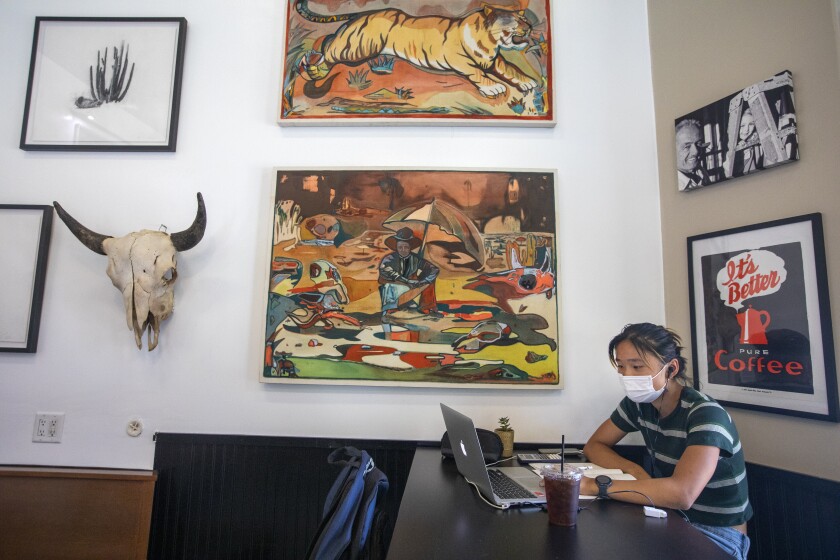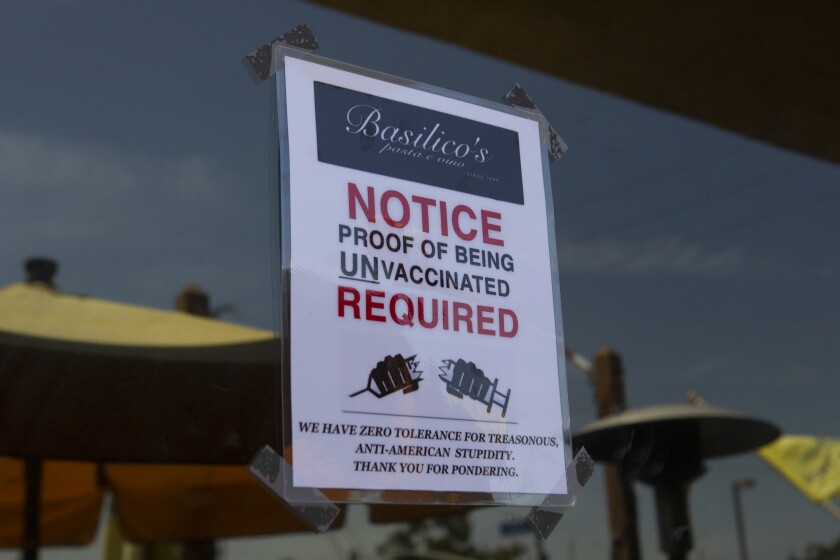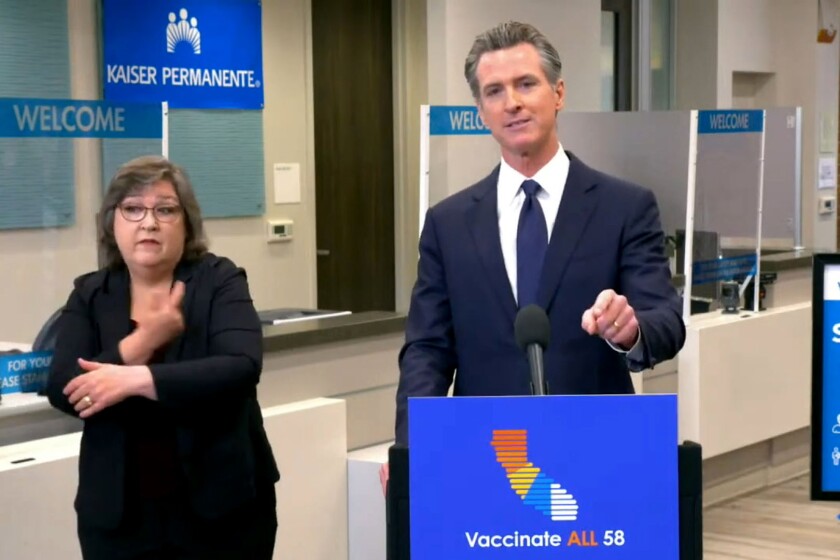Coronavirus surge worsening in California as officials consider more drastic actions

Faced with sustained increases in coronavirus infections and COVID-19 hospitalizations, California officials are considering new measures to hopefully cap the spike.
Though the number of infections and those who are ill enough to be hospitalized remain well below the levels of previous surges, the extent of the latest increases is ringing alarm bells across the state.
“Our projections are sobering,” Gov. Gavin Newsom told reporters earlier this week. “Our projections are, over the course of the next number of weeks, we’ll show a significant increase in hospitalizations if we continue down this path.”
Over the last week, California has reported an average of nearly 7,400 new coronavirus cases a day — roughly eight times the rate from four weeks ago, according to data compiled by The Times.
On Monday, 3,200 COVID-19 patients were hospitalized statewide, with 720 of them in intensive care.
Both those figures have doubled in the last two weeks.
L.A. will require city employees to provide proof of vaccination against COVID-19 or undergo weekly testing for the virus.
More aggressive actions
Newsom and other state officials unveiled the latest prong of their COVID-19 battle plan earlier this week.
Starting next month, California will require all state employees — as well as workers in public and private healthcare facilities and congregate settings such as jails, homeless shelters and senior living homes — to show proof they’ve been vaccinated.
Those who are unvaccinated, or decline to provide the requested documentation, will be subject to regular testing and have to wear masks while working indoors.
It remains to be seen whether the state will follow the path already trod by a number of counties and issue a new recommendation for even fully vaccinated residents to resume wearing masks in indoor public settings.
State health officials are reviewing federal guidance that residents who are vaccinated should resume wearing masks in indoor public settings.
California health officials are still reviewing guidance the U.S. Centers for Disease Control and Prevention issued Tuesday, which stated that residents in regions with elevated levels of coronavirus transmission should resume wearing masks indoors while in public, even if they’re fully vaccinated.
“We are doing a full review of the updated recommendations released by the CDC today and will evaluate existing guidance to determine the best path forward to protect Californians from the spread of COVID-19 and the highly contagious Delta variant,” the California Department of Public Health wrote Tuesday afternoon in response to an email inquiry from The Times.
The CDC is advising that residents mask up in indoors while in public areas where community transmission is considered “substantial” or “high” — the two worst classifications on the agency’s four-tier scale.
Most of California fell into one of those categories as of Wednesday morning, including the entire southern third of the state, except San Luis Obispo County.
Los Angeles County already requires masks in public indoor spaces, and face coverings also will be required in such spaces in Yolo County starting Friday, officials said this week.
Many other California counties have issued recommendations, though not mandates, for their residents to do likewise.
Yolo County on Tuesday ordered that everyone must wear a mask or face covering in indoor public spaces, regardless of vaccination status, beginning Friday.
The COVID-19 surge is continuing in Los Angeles, with more than 2,000 new cases reported Tuesday.
“Case rates are increasing across all adult age groups, with the highest case rate increases occurring in adults between the ages of 18 and 29 years old with a nine-fold increase, from 40 to 350 cases per 100,000 over the course of the past month. And case rates have increased 7.5-fold among 30- to 49-year-olds, from 33 to 247 cases per 100,000,” the county said in a statement.
The CDC recommends that even vaccinated people wear masks indoors in parts of the U.S. where the coronavirus is surging.
Looking ahead
Despite the recent rise, California is nowhere near the peaks recorded during the fall and winter surge, when the state was reporting an average of more than 40,000 daily cases, and nearly 22,000 coronavirus-positive patients were hospitalized on some days.
COVID-19 deaths also have remained relatively low — at about 25 per day, on average.
Fatalities are the ultimate lagging indicator of coronavirus spread, and it sometimes takes weeks for increases in transmission to trigger a rise in deaths. Some officials, though, are optimistic that the state could avoid a severe spike in deaths, given how many Californians have already been vaccinated.
Officials and experts say there’s a wealth of data demonstrating how powerful the available COVID-19 vaccines are at preventing infection — and particularly at staving off serious illness.
According to the California Health and Human Services Agency, the latest coronavirus case rate among unvaccinated residents is thought to be above 14 per 100,000 people — roughly seven times the rate for those who are fully vaccinated.
And more than 97% of people now hospitalized for COVID-19 nationally have not been vaccinated, according to CDC Director Dr. Rochelle Walensky.
“People who are not vaccinated are driving up cases and hospitalizations in California, and we urge everyone who is eligible to get vaccinated now so we can keep our kids in school and businesses open,” state health officials wrote in their statement to The Times.
But even with California’s relatively robust vaccine coverage — nearly 61% of all residents have received at least one dose to date, and 53% are fully vaccinated, Times’ data show — millions of people have either not yet rolled up their sleeves, or are not yet eligible to do so.
Those uninoculated individuals remain at particular risk of infection, experts say, especially given the rapid spread of the highly infectious Delta variant of the coronavirus.
“Estimates are that this is the most infectious respiratory virus we’ve seen in a long time, and it’s certainly the most infectious variant we’ve seen,” L.A. County Public Health Director Barbara Ferrer said Tuesday.
News Alerts
Get breaking news, investigations, analysis and more signature journalism from the Los Angeles Times in your inbox.
You may occasionally receive promotional content from the Los Angeles Times.








